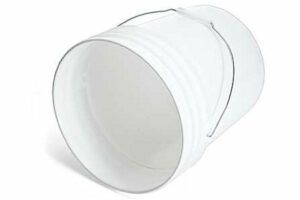We may be compensated if you purchase through links on our website. Our team is committed to delivering honest, objective, and independent reviews on home products and services.
Project details
Skill
Cost
Estimated Time
*Cost information in this article sourced from Angi.
Achieving clean, crisp paint lines along walls, casings, and trim is a valuable skill for any DIY painter. The technique, known as “cutting in,” requires patience and practice but can elevate the look of your paint job significantly.
In this guide and accompanying video, painting expert Mark O’Lalor demonstrates the proper cutting in technique, offering valuable tips for both beginners and experienced painters.
Understanding the Cutting In Process
Cutting in is the process of painting a clean line along the edges of walls, ceilings, and trim without using painter’s tape. This technique requires a steady hand and the right tools, but when done correctly, it can save time and produce professional-looking results.
What Is the Best Paintbrush for Edging?
A sash paintbrush is the ideal tool for cutting in. These brushes have angled bristles that allow for precise control when painting along edges. The angled design helps you get into corners and along trim more easily than a standard flat brush. Ensuring you have the right tools is the first step to a successful painting project.
Preparing Your Brush for Cutting In
Before you start painting, you’ll need to prepare your brush. Proper prep gives you better control when painting and leads to easier cleanup:
- Wet the bristles of your paintbrush with clean water.
- Use a brush and roller spinner to remove excess water.
- Ensure the bristles are damp but not dripping wet.
The Cutting In Technique
Mastering the cutting in technique takes practice, but following these steps will help you obtain professional-looking results.
Loading Your Brush
- Dip about two-thirds of the bristles into the paint.
- Tap the brush gently on the side of the paint can to remove excess.
- Avoid getting paint on the upper third of the bristles or the ferrule (the metal band holding the bristles).
Applying Paint to the Wall
- Start by painting a vertical stripe about 1 inch from the edge you’re cutting in.
- Use this stripe as a “reservoir” of paint for your brush.
- Push down on the brush to flare out the bristles.
- Draw the paint along the edge, creating a clean line.
Maintaining a Clean Line
To ensure a crisp, clean line while cutting in:
- Work in small sections, about 2 to 3 feet at a time.
- Keep a steady hand and maintain consistent pressure on the brush.
- Use long, smooth strokes for the best results.
- Clean your brush regularly to prevent dried paint from affecting your line.
Cutting In Different Surfaces
Your cutting in technique may vary slightly depending on the surface you’re painting. Understanding the following nuances will help you achieve a consistent, seamless finish.
Cutting In Along Door and Window Casings
When cutting in along door and window casings that you do not intend to paint:
- Apply paint carefully, avoiding overlap onto the casing.
- Create a clean line right up to the edge of the casing.
- Use a light touch to prevent paint buildup.
Cutting In Along Baseboards
For baseboards that you intend to paint later on:
- Allow a slight overlap of wall paint onto the baseboard.
- This overlap will be covered when you paint the baseboard, ensuring a clean line.
- Ensure to consider floor protection during this process to prevent spillage.
Cutting In Along Ceilings
Cutting in along ceilings can be challenging due to the awkward angle:
- Use a sturdy ladder or platform to reach comfortably.
- Take frequent breaks to avoid arm fatigue, which can lead to unsteady lines.
- Consider using an edging tool for extra support if you’re having difficulty.
Additional Tips for a Better Paint Finish
Sometimes, little details and additional steps can make a significant difference in the outcome of your painting project.
Working in Sections
When tackling a significant painting project, working in manageable sections helps maintain consistency and reduces the likelihood of mistakes. Focus on completing small areas before moving to the next to make the process less overwhelming.
Proper Lighting
Proper illumination ensures you can see what you’re doing, reducing the chances of missing spots or overlapping. Natural light is ideal, but if that’s not possible, make sure to use bright, white artificial lights.
Choosing the Right Paint
You’ll want to select an appropriate paint for your project. High-quality paints provide better coverage and are easier to work with, resulting in a more professional look. Additionally, consider the finish of the paint—matte, satin, or gloss—as this can affect the final appearance.
Maintaining Your Paintbrush
Proper brush care helps achieve consistent results and prolongs the life of your tools. We recommend the following cleaning and storage methods.
Cleaning Your Brush
- Rinse the brush thoroughly with water (for latex paints) or the appropriate solvent (for oil-based paints).
- Use a brush comb to remove any dried paint from the bristles.
- Spin the brush to remove excess water or solvent.
- Reshape the bristles and allow the brush to dry completely.
Storing Your Brush
- Store clean, dry brushes in their original packaging or a brush keeper.
- Hang brushes vertically to maintain their shape.
- Keep brushes in a cool, dry place, away from direct sunlight.
Our Conclusion
Cutting in is a valuable skill that can significantly improve the quality of your painting projects. With the right tools, proper technique, and plenty of practice, you can achieve professional-looking paint jobs. Remember to take your time, maintain a steady hand, and clean your brush regularly for the best outcome.
Tools and Materials You’ll Need
 Sash paint brush
Sash paint brush Brush and roller spinner
Brush and roller spinner 5-In-1 Painter’s Tool
5-In-1 Painter’s Tool Bucket
Bucket White cotton cloth
White cotton cloth





